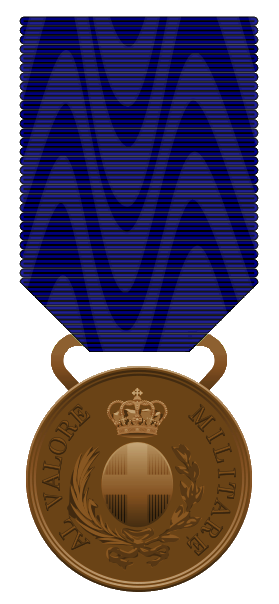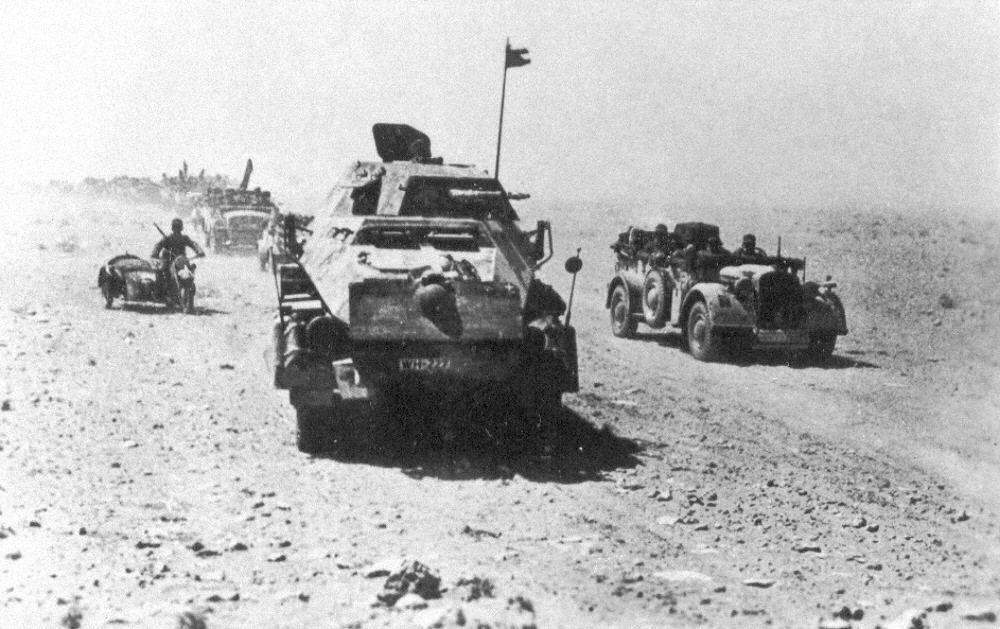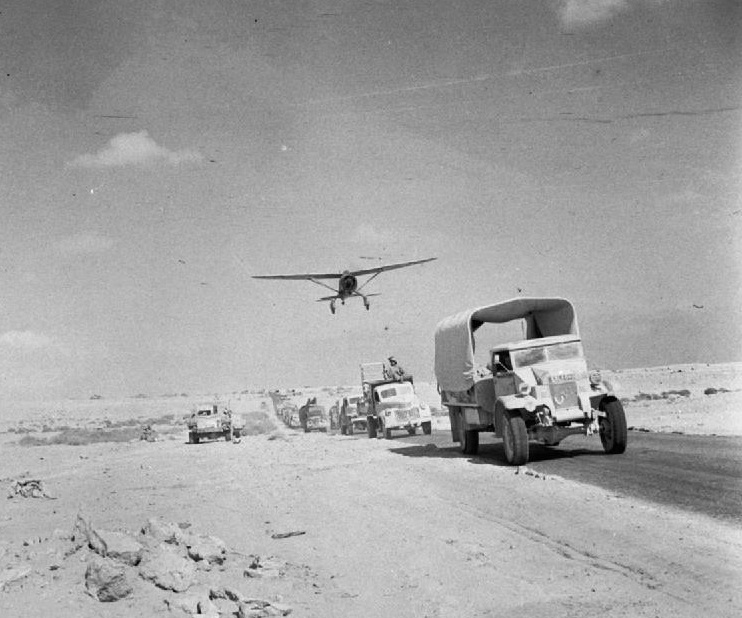|
Giuseppe De Stefanis
Giuseppe De Stefanis (La Spezia, 20 December 1885 – Rome, 11 December 1965) was an Italian general during World War II. Biography De Stefanis was born in La Spezia on December 20, 1885. After enlisting in the Royal Italian Army, in November 1903 he enrolled in the Royal Military Academy of Artillery and Engineers in Turin, graduating with the rank of artillery second lieutenant on September 28, 1905. After promotion to lieutenant on August 28, 1908, he became captain on February 1, 1915. In 1915 he married Miss Emanuela dei Visconti di Ozzano. He participated in the First World War, receiving a Bronze Medal of Military Valour for an action on the Isonzo Front in September 1916 and being promoted to major on June 16, 1917. On 29 October 1922 he became alternate judge at the territorial military court of Rome, and on 20 April 1924 he was transferred to the General Staff. On March 31, 1926 he took up service as section head in the General Staff of the Royal Army, being promo ... [...More Info...] [...Related Items...] OR: [Wikipedia] [Google] [Baidu] |
Chief Of Staff Of The Italian Army
The chief of staff of the Italian Army refers to the chiefs of staff of the Royal Italian Army from 1882 to 1946 and the Italian Army from 1946 to the present. List of chiefs of staff Royal Italian Army (1882–1946) Italian Army (1946–present) See also *Italian Armed Forces **Chief of the Defence Staff (Italy) *Royal Italian Army *Italian Army Notes References External links {{Chief of the army by country Military of Italy Italian Army Lists of Italian military personnel Army chiefs of staff, Italy Chiefs of staff of the Italian Army, ... [...More Info...] [...Related Items...] OR: [Wikipedia] [Google] [Baidu] |
Operation Crusader
Operation Crusader (18 November – 30 December 1941) was a military operation of the Western Desert campaign during World War II by the British Eighth Army (with Commonwealth, Indian and Allied contingents) against the Axis forces (German and Italian) in North Africa commanded by (Lieutenant-General) Erwin Rommel. The operation was intended to bypass Axis defences on the Egyptian–Libyan frontier, defeat the Axis armoured forces near Tobruk, raise the Siege of Tobruk and re-occupy Cyrenaica. On 18 November 1941, the Eighth Army began a surprise attack. From 18 to 22 November, the dispersal of British armoured units led to them suffering 530 tank losses and inflicting Axis losses of about 100 tanks. On 23 November, the 5th South African Brigade was destroyed at Sidi Rezegh but caused many German tank losses. On 24 November Rommel ordered the "dash to the wire" and caused chaos in the British rear but allowed the British armoured forces to recover. On 27 November, the New Zeal ... [...More Info...] [...Related Items...] OR: [Wikipedia] [Google] [Baidu] |
Royal Italian Army
The Royal Italian Army () (RE) was the land force of the Kingdom of Italy, established with the proclamation of the Kingdom of Italy. During the 19th century Italy started to unify into one country, and in 1861 Manfredo Fanti signed a decree creating the Army of the Two Sicilies. This newly created army's first task was to defend its territorial gains against Legitimists in southern Italy, who remained loyal to Francis II of the Two Sicilies. The Army of the Two Sicilies also waged what many modern historians now consider a civil war against outlaws and Bourbonist guerrillas, such as the famous Michelina Di Cesare, and against other Italian states' armies during the continuing wars of unification. After the monarchy ended in 1946, the army changed its name to become the modern Italian Army (). Within the Royal Italian Army were the elite mountain military corporals, the Alpini. The Alpini, which remain in existence today, are the oldest active mountain infantry in the w ... [...More Info...] [...Related Items...] OR: [Wikipedia] [Google] [Baidu] |
Order Of Merit Of The Italian Republic
The Order of Merit of the Italian Republic () is the most senior Italian order of merit. It was established in 1951 by the second President of Italy, President of the Italian Republic, Luigi Einaudi. The highest-ranking honour of the Republic, it is awarded for "merit acquired by the nation" in the fields of science, literature, arts, economy, public service, and social, philanthropic and humanitarian activities and for long and conspicuous service in civilian and military careers. The post-nominal letters for the order are OMRI. The order effectively replaced national orders such as the Civil Order of Savoy (1831), the Order of the Crown of Italy (1868), the Order of Saints Maurice and Lazarus (1572) and the Supreme Order of the Most Holy Annunciation (1362). Grades Investiture takes place twice a year – on 2 June, the anniversary of the 1946 Italian institutional referendum, foundation of the Republic, and on 27 December, the anniversary of the promulgation of the Cons ... [...More Info...] [...Related Items...] OR: [Wikipedia] [Google] [Baidu] |
Order Of Saints Maurice And Lazarus
The Order of Saints Maurice and Lazarus () (abbreviated OSSML) is a Roman Catholic dynastic order of knighthood bestowed by the royal House of Savoy. It is the second-oldest order of knighthood in the world, tracing its lineage to AD 1098, and it is one of the rare orders of knighthood recognized by papal bull, in this case by Pope Gregory XIII. In that bull, Pope Gregory XIII bestowed upon Emmanuel Philibert, Duke of Savoy and his Savoy successors, the right to confer this knighthood in perpetuity. The Grand Master is Prince Emanuele Filiberto of Savoy, Prince of Venice, also known as the Duke of Savoy, the grandson of the last King of Italy, Umberto II. However, Emanuele Filiberto's cousin twice removed Prince Aimone, Duke of Aosta in theory claims to be the rightful grand master as his father claimed to be head of the house of Savoy. The order was formerly awarded by the Kingdom of Italy (1861–1946) with the heads of the House of Savoy as the Kings of Italy. Origin ... [...More Info...] [...Related Items...] OR: [Wikipedia] [Google] [Baidu] |
Military Order Of Savoy
The Military Order of Savoy was a military honorary order of the Kingdom of Sardinia first, and of the Kingdom of Italy (1861–1946), Kingdom of Italy later. Following the abolition of the Italian monarchy, the order became the Military Order of Italy. History The origin of the Military Order of Savoy can be traced back to the Medal of Military Valor granted by Victor Amadeus III of Sardinia to his soldiers. Between 1789 and 1815 this medal went into disuse because of the Piedmontese Republic, Piedmontese and Subalpine Republics and the subsequent Napoleonic regime in Italy in Savoy and Piedmont. On 1 April 1815 the medal was bestowed again by Victor Emmanuel I of Sardinia and on the 14th of August of the same year replaced by the Military Order of Savoy. This military order was to be granted to the soldiers who fought in the army of Napoleon and became part of the Legion of Honor or the Order of the Iron Crown due to military merit. It was also conferred to officers of the Roy ... [...More Info...] [...Related Items...] OR: [Wikipedia] [Google] [Baidu] |
Bronze Medal Of Military Valour
The Bronze Medal of Military Valor () is an Italian medal for gallantry. It was established by Charles Albert of Sardinia on 26 March 1833, along with the higher ranking Gold Medal of Military Valor and Silver Medal of Military Valor, which were established by King Victor Amadeus III on 21 May 1793. These medals, as well as the "Croce di Guerra al Valor Militare" (War Cross of Military Valor - which can only be awarded in time of war) are established by the Royal Decree of 4 November 1932, in which their purpose is defined as "To distinguish and publicly honor the authors of heroic military acts, even ones performed in time of peace, provided that the exploit is closely connected with the purposes for which the Armed Forces are constituted, whatever may be the condition or quality of the author." During the First World War, the medal was given out some 60,244 times for individual acts of heroism (compared to 38,614 Silver medals and 368 Gold Medals)."Nel 1° Centenario della istit ... [...More Info...] [...Related Items...] OR: [Wikipedia] [Google] [Baidu] |
Battle Of El Agheila
The Battle of El Agheila was a brief engagement of the Western Desert Campaign of the Second World War. It took place in December 1942 between Allied forces of the Eighth Army (General Bernard Montgomery) and the Axis forces of the German-Italian ''Panzer'' Army ( Erwin Rommel), during the long Axis withdrawal from El Alamein to Tunis. The Eighth Army planned to outflank and trap the Axis forces as they withdrew to Tunis. The Eighth Army plan was thwarted when a frontal attack by the British 7th Armoured Division was repulsed by an Italian rearguard action and the outflanking New Zealand units became dispersed in the desert. The engagement ended with the German-Italian ''Panzer'' Army withdrawing into Tripolitana towards Tunisia, where the Tunisia Campaign had begun with the Operation Torch the Allied invasion of French North Africa Background German–Italian retreat: Egypt On 4 November 1942, Rommel decided to end the Second Battle of El Alamein and withdraw west toward ... [...More Info...] [...Related Items...] OR: [Wikipedia] [Google] [Baidu] |
Second Battle Of El Alamein
The Second Battle of El Alamein (23 October – 11 November 1942) was a battle of the Second World War that took place near the Egyptian Railway station, railway halt of El Alamein. The First Battle of El Alamein and the Battle of Alam el Halfa had prevented the Axis powers, Axis from advancing further into Egypt. In October 1942 Lieutenant-general (United Kingdom), Lieutenant-General Bernard Montgomery, commander of Eighth Army (United Kingdom), Eighth Army, opened his offensive against the Axis forces. In a 13-day battle the Axis ''Panzerarmee Afrika'' was crushed and forced to retreat from Egypt and Libya to the borders of Tunisia. The Allied victory at El Alamein was the beginning of the end of the Western Desert Campaign. The battle ended the Axis threat to the Middle East and Iran and revived the morale of the western Allies, being their first big success against the Axis since Operation Crusader in late 1941. The end of the battle coincided with the Allied invasion of F ... [...More Info...] [...Related Items...] OR: [Wikipedia] [Google] [Baidu] |
Battle Of Alam Halfa
The Battle of Alam el Halfa took place between 30 August and 5 September 1942 south of El Alamein during the Western Desert Campaign of the Second World War. '' Panzerarmee Afrika'' (''Generalfeldmarschall'' Erwin Rommel), attempted an envelopment of the British Eighth Army (Lieutenant-General Bernard Montgomery). In (Operation Surf), the last big Axis offensive of the Western Desert Campaign, Rommel intended to defeat the Eighth Army before Allied reinforcements arrived. Montgomery knew of Axis intentions through Ultra signals intercepts and left a gap in the southern sector of the front, knowing that Rommel planned to attack there and deployed the bulk of his armour and artillery around Alam el Halfa Ridge, behind the front. Unlike in previous engagements, Montgomery ordered that the tanks were to be used as anti-tank guns, remaining in their defensive positions on the ridge. When Axis attacks on the ridge failed and short on supplies, Rommel ordered a withdrawal. The 2n ... [...More Info...] [...Related Items...] OR: [Wikipedia] [Google] [Baidu] |
First Battle Of El Alamein
The First Battle of El Alamein (1–27 July 1942) was a battle of the Western Desert campaign of World War II, fought in Egypt between Axis (German and Italian) forces of the Panzer Army Africa—which included the under Field Marshal Erwin Rommel—and Allied (British Empire and Commonwealth) forces of the Eighth Army under General Claude Auchinleck. In this battle the British halted a second advance by the Axis forces into Egypt. Axis positions near El Alamein, only from Alexandria, were dangerously close to the ports and cities of Egypt, the base facilities of the Commonwealth forces and the Suez Canal. However, the Axis forces were too far from their base at Tripoli in Libya to remain at El Alamein indefinitely, which led both sides to accumulate supplies for more offensives, against the constraints of time and distance. Background Retreat from Gazala After their defeat at the Battle of Gazala in Eastern Libya in June 1942, the British Eighth Army, commanded by ... [...More Info...] [...Related Items...] OR: [Wikipedia] [Google] [Baidu] |
Battle Of Mersa Matruh
The Battle of Mersa Matruh was fought from 26 to 29 June 1942, following the defeat of the Eighth Army (United Kingdom), Eighth Army (General Sir Claude Auchinleck) at the Battle of Gazala and was part of the Western Desert Campaign of the Second World War. The battle was fought with the Axis Powers, German–Italian Panzer Army Afrika ( ( Erwin Rommel). The Eighth Army comprised X Corps (United Kingdom), X Corps and XIII Corps (United Kingdom), XIII Corps. The battle was fought during the pursuit of the Eighth Army as it retreated into Egypt. Rommel intended to defeat in detail (one after the other) the British infantry formations, before they had a chance to regroup. The fortress port of Mersa Matruh and 6,000 prisoners were captured, along with a great deal of supplies and equipment. The Axis cut off the line of retreat of X Corps and XIII Corps but was too weak to stop the British from breaking out. Background After the defeat of the Eighth Army at the Battle of Gazala, th ... [...More Info...] [...Related Items...] OR: [Wikipedia] [Google] [Baidu] |







